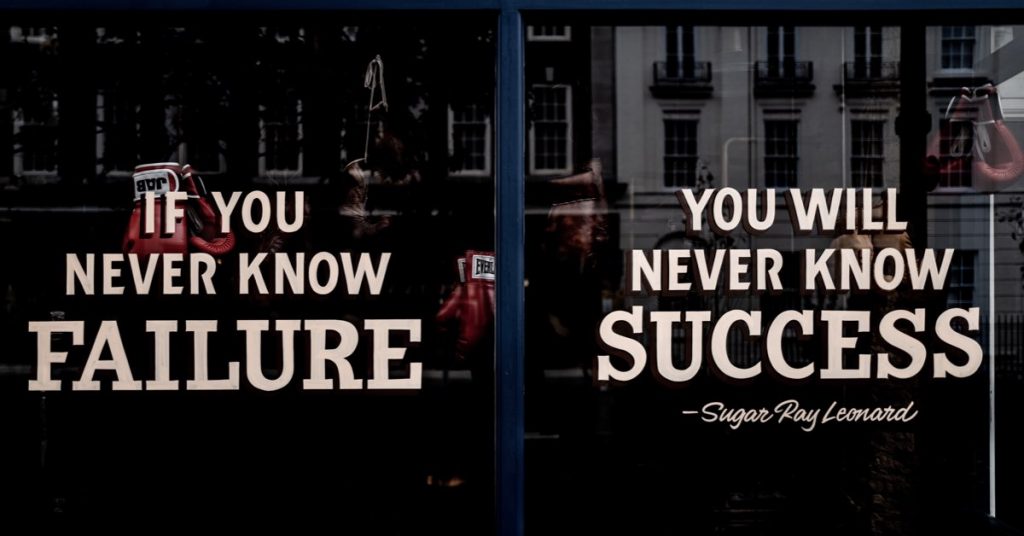And How to Do Failure Properly

GUEST POST from David Burkus
Failure is feedback. And that maxim is nowhere more true than on teams. When individual team members or the whole team experiences a failure, how they respond can be the difference between a team that continuously improves and enhances performance, and a team that falls apart.
And research backs this up. One of the first studies of psychological safety focused on how teams responded to failure. Amy Edmondson examined the teams of nurses on various wards of a hospital and found that the teams with the highest rated leaders had a higher than average rate of reported medical errors. It wasn’t until looking further that she found the medical error rates were actually the same as other wards…but lower rated leaders who punished failures scared nurses away from reporting them. In other words, the great teams with great leaders embraced failure. And in doing so, they made it easier for everyone on the team to learn from mistakes and get better.
In this article, we’ll review three ways many teams embrace failure on individual, team, and system-wide levels in order to learn, grow, and better perform.
Learning Moments
The first way great teams embrace failure is through learning moments. A learning moment is a positive or negative outcome of any situation that is openly and freely shared to benefit all. And learning moments aren’t strictly a euphemism for failures. A learning moment happens whenever a team member experiences a personal failure and shares that failure with the team along with what they’re learned as a result. The idea is to grant amnesty over the occasional screw-up so long as the person brings a lesson as well. Over time, learning moments become opportunities to discuss how to change one’s approach or put systems in place to reduce failures in the future. But most importantly, learning moments destigmatize failures and move them from being something to be denied at all costs to something that increases performance. Failure is a great teacher—and when team member’s share learning moments they’re reducing the tuition for everyone else on the team by saving them from their own failures.
Post-Mortems
The second way great teams embrace failure is through post-mortems. A post-mortem is exactly what it sounds like…it’s a meeting to discuss a project after it has died. It’s meant to diagnosis teamwide failures (though many high performing teams also conduct post-mortems after the completion of successful projects as well). The purpose of the meeting is not to find someone to blame, or someone to give all the credit. The goal is to extract lessons from the project about where the team is strong and where they need improvement. When people are open and honest about their weaknesses and contributions to failure, teams celebrate the vulnerability that was just signaled.
Many teams can conduct an effective post-mortem with just five simple questions:
- What was our intended result?
- What was the actual result?
- Why were they different?
- What will we do the same next time?
- What will we do differently next time?
These five answers help identify the parts of the project that teams need to improve, while keeping them focused on the future and not on blaming people for actions in the past.
Failure Funerals
The third way great teams embrace failure is through failure funerals. As if a post-mortem didn’t sound morbid enough, failure funerals are useful rituals to reflect on failures that happened due to situations outside of the team’s control. Sometimes failures just happen. The environment changes, unforeseen regulations are created, or clients inexplicably decide to part ways. When that happens, it’s important to create moments for teams mourn the loss—but also extract some learning. This can be a short as a 15- or 30-minute meeting where team members share their feelings about the project that failed—and pivot toward what they appreciated about serving on the project and what they learned. Some teams even observe a moment of silence or a toast to the project gone wrong. These types of celebrations not only focus the team on lessons learned, but they encourage future risk-taking and keep teams motivated even when those chances of failure are high. Failure is inevitable—learning is a choice. And the purpose of a failure funeral is to make the deliberate choice to learn.
In fact, each of these three rituals represent a deliberate choice toward learning. Great teams embrace failure because doing so embraces learning. Those extra lessons help them improve over time—and trust each other more over time—and eventually become a team where everyone feels they can do their best work ever.
Image credit: David Burkus
Originally published at https://davidburkus.com on May 1, 2023.
![]() Sign up here to join 17,000+ leaders getting Human-Centered Change & Innovation Weekly delivered to their inbox every week.
Sign up here to join 17,000+ leaders getting Human-Centered Change & Innovation Weekly delivered to their inbox every week.